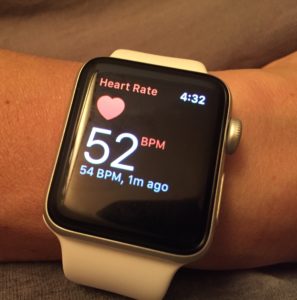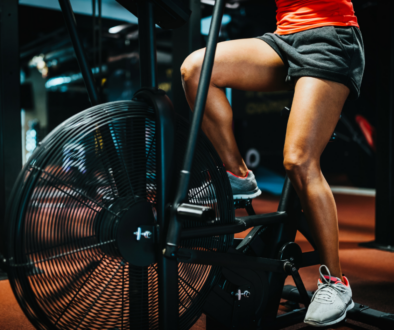Check Your HRV and RHR Daily to Avoid Overtraining
When we exercise, our heart speeds up, we sweat, muscles get tense, and our blood pressure rises. We are in “fight or flight.” Introducing a bit of stress this way is beneficial: our muscles grow stronger, our bones become denser, immunity improves, as our heart gets more efficient resting heart rate decreases, and we become better able to cope with the stresses of life.
Unless of course if we’re overtraining. Doing too much and taking too little time to rest and recover cancels out many of the health benefits of exercise. How do we know if we are overtraining? Heart Rate Variability (HRV) and Resting Heart Rate (RHR) are two markers we can easily check daily to monitor the effects of training and other stressors on the body.
HRV, refers to the time between consecutive heart beats. A low HRV score means the heart beats are more consistent like the second hand on a clock. This might sound good, but it isn’t. Low HRV is associated with negative health issues such as heart disease, depression, PTSD, chronic stress, and anxiety.
A high HRV score means there is greater variation in the time between heart beats. High HRV is associated with greater resiliency and improved ability to self-regulate and adapt. A high HRV score is preferable because it signals that the Parasympathetic Nervous System, a.k.a. “rest and digest,” is in control. The PSNS is the counterpart to the Sympathetic Nervous System, “fight or flight.” A low HRV score indicates that the SNS dominates, which means we’re spending too much time in “fight or flight.” Whether it’s life, work, or the gym, something’s got us too stressed out. Pushing through another killer workout today is not the solution.
 Resting heart rate, RHR, is expressed as beats per minute (BPM). 72 BPM is average, 50-55 BPM means we’re aerobically fit, and 40-50 BPM means we’re an elite athlete. If in the morning our heart rate is elevated above our normal RHR, that could signal that the body hasn’t finished recovering from the last workout and isn’t ready for another tough day at the gym.
Resting heart rate, RHR, is expressed as beats per minute (BPM). 72 BPM is average, 50-55 BPM means we’re aerobically fit, and 40-50 BPM means we’re an elite athlete. If in the morning our heart rate is elevated above our normal RHR, that could signal that the body hasn’t finished recovering from the last workout and isn’t ready for another tough day at the gym.
If we have chronically low HRV and a high RHR, we need more than just rest. We must strengthen the PSNS, “rest and digest,” with yoga and meditation. Both have been shown to bring many health benefits including improved HRV and decreased RHR.
 I check HRV and RHR first thing every morning with the ithlete app . I plug the finger sensor into my phone and get a reading in one minute. If I have a high score, I train hard, If I get a medium score, I know it’s a good day for accessory work or light cardio. If a get a low score, I rest, go for a walk, or stretch. Tracking my HRV and RHR has helped me not only in planning my training, but also in understanding how other factors, such diet, work, and sleep, influence my recovery.
I check HRV and RHR first thing every morning with the ithlete app . I plug the finger sensor into my phone and get a reading in one minute. If I have a high score, I train hard, If I get a medium score, I know it’s a good day for accessory work or light cardio. If a get a low score, I rest, go for a walk, or stretch. Tracking my HRV and RHR has helped me not only in planning my training, but also in understanding how other factors, such diet, work, and sleep, influence my recovery.
Post your resting heart rate and your questions about recovery in the comments.
Alicia Cross is a Certified Personal Trainer, Wellness Coach, and Yoga Instructor with more than 15 years’ experience working with clients in classes and one-on-one. She is a yogi, meditator, vegan, and lifter of heavy things. If you’re ready to discover the strength and peace that comes from within, email Alicia@AliciaCrossTraining.com.
Related Post:



